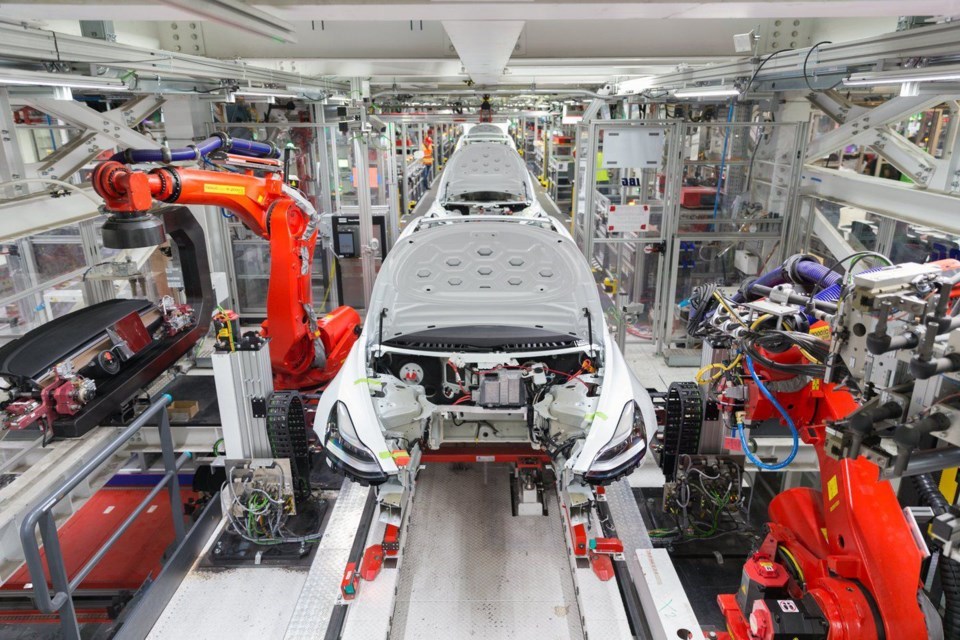Have you heard? There is a tsunami coming! Or as some say, a major disruption in transportation around the globe. Well, how about in Manitoba, or not? Hold that thought!
The rapid growth of electric vehicles (EV) in the past five years is truly remarkable and predictions are that this will keep happening. The world wants cleaner transportation, less pollution, and attempts to reverse, or at least stall, climate change.
It didn’t long for American President Joe Biden to declare some directives to show where his government is heading. Cancelling the Keystone Pipeline project was a great disappointment and will have a negative impact on Alberta’s oil economy. Biden’s commitment to electrify the American government’s fleet of 600,000 vehicles and add 50,000 EV charging stations provides strong direction. Of course, the USA is trying to catch up to China and Europe.
In 2015 China had very few electric cars. Since then, they have made great strides to build and sell more EVs than any country in the world. China already has its own EV industry. Then Tesla built a gigafactory in Shanghai in 2019 that will produce 500,000 cars a year. Tesla is also building gigafactories in Texas and Germany. They are the dominant world leader.
Europe’s EV industry is also growing at warp speed. The push to clean energy has resulted in 11 countries banning all new gas-powered car sales by 2025. Volkswagen, after paying billion dollar fines for “dieselgate,” is going all electric. Norway has reached the level of 70 per cent of all cars being sold as electric. Some countries are using a stick and carrot approach – penalties for keeping gas burners and rebates if you purchase a zero emission vehicle (ZEV).
In Canada, only 3.5 per cent of all cars are EVs, and in 2020, 95 per cent were purchased in Quebec, Ontario, and British Columbia. That’s a result of factors such as which provinces offer incentives to buy, where EVs are available to buy, and are there adequate rapid charging stations to reduce “range anxiety.”
British Columbia has highest per capita number of EVs because of federal and provincial incentive programs for purchasing, fleet assessment, charging infrastructure for buildings, and public rapid chargers in rural and northern areas. The Québec government is offering individuals and businesses a rebate of up to $8,000 on the purchase or lease of a new electric vehicle. Hydro-Québec will install up to 4,500 standard electric vehicle charging stations in urban centres by 2028. New Brunswick is offering a $5,000 rebate for new EV purchases. The government of Prince Edward Island offers $5,000 to Islanders who purchase a new or used EV, and a free Level 2 charger to people who purchase an EV. Natural Resources Canada is co-funding investments with Newfoundland and Labrador Hydro to build 28 EV chargers across the province that will “create good, middle-class jobs and support Canada’s transition to a clean energy future by reducing pollution.”
Automobile sales worldwide declined by approximately 20 per cent last year when the pandemic hit, and people stopped traveling. Yet, EV sales still increased. The trend and momentum for ZEVs is strong and clear. This interest reflects a strong global desire to reduce the reliance on fossil fuels and lower greenhouse gas emissions. Are the recent heat waves and record high temperatures in Canada and the USA indicative of what climate change is bringing? Oil industry analysts are predicting the demand for oil worldwide is declining. Even Arab states are looking at alternate investments to diversify their economies.
My first experience with EVs was at a car show in Winnipeg in 2019 hosted by the Manitoba Electric Vehicle Association (MEVA). I had a chance to ride in a Tesla and was amazed what a pure electric car can do. Quiet, clean, incredible acceleration and speed, and with few moving parts there is little concern about maintenance expenses. The cost to drive annually is one-tenth the cost of a internal combustion engine ICE.
EV batteries are getting stronger and better every year. There are already newer batteries that will provide 500 to 1,000 km of range. Reminds me of my first DOS computer in the 1990s with a 40 mb hard drive that cost $3,300. Compare that today to a 32 GB USB drive for only 10 bucks. That’s where EV technology is headed.
So, here I live in Thompson, Manitoba, the Hub of the North, 750 km north of Winnipeg. I’d love to buy an EV tomorrow, but can’t drive it to southern Manitoba. The north is hindered by a lack of EV charging infrastructure. Why?
This is part one of a two-part series. Pick up the Thompson Citizen Sept. 15 or check out thompsoncitizen.net next week to find out more about why Manitoba is lagging behind other Canadian provinces and other countries when it comes to encouraging electric vehicle purchases and use.




